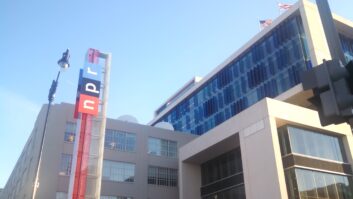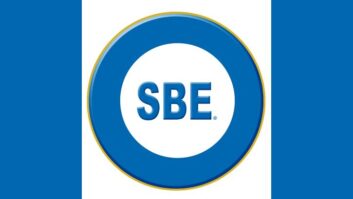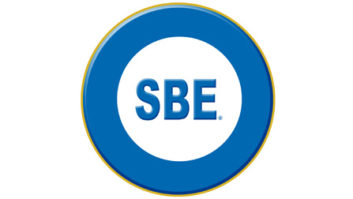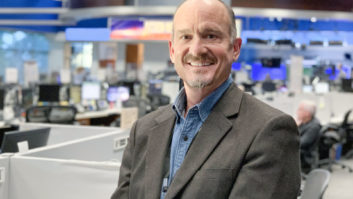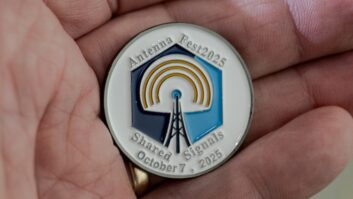The Radio World ebook “Transmission 2024” explores trends in the design and feature set of today’s broadcast transmitters.
Rich Redmond is president and chief operating officer of Elenos Group, parent of Broadcast Electronics. He is responsible for its operations in the Americas. This interview is excerpted from the ebook.
Radio World: Rich what do you consider the most important changes or trends in this area of radio technology?

Rich Redmond: The key transmitter trends are highlighted in two areas, one around the operations of the transmitter, and the second around maintenance and repair.
From an operational aspect, broadcasters around the world are looking for economies including space, energy efficiency and flexibility. Transmitters are getting smaller with more power in less space in part due to advancements in RF device technology like LDMOS and Silicon Carbide, and innovative new power supplies that provide over 95% AC to DC efficiency with nearly 5 kW of power that fits in the palm of your hand.
New software-defined modulation solutions allow broadcasters to have more capabilities than before, and the flexibility to switch from analog to digital, and even change digital formats all with the press of a button, not to mention advanced real-time correction algorithms that can maximize power output and minimize energy consumption.
As the broadcast engineering skillset globally evolves, there are fewer technicians who can and have time to do component-level troubleshooting in the field. Transmitters need to, and are becoming, more modular to allow for simple module swaps and powerful diagnostic software that provides step-by-step troubleshooting both locally and more importantly remotely, via IP connectivity; all to match today’s smaller and more IT-centric technical teams.
RW: When your customers are considering a purchase, what key questions do you recommend they consider?
Redmond: The first step is to really understand your objective and the type of service and location of the transmitter you need to purchase. Do you need today or in the future digital capabilities like HD Radio? How important is energy efficiency, how much space do you have at the site and how does the transmitter fit and allow you good access for servicing? How simple will the repair be in the future?
All of these points help you decide how important the transmitter features and attributes are for your environment and application. When you distill all your needs and wants versus the various options offered, the real questions are: Will it reliably deliver my content and be cost-effective to operate? And can I get service and support for the long term?
RW: How will software-integrated air chains change how we deploy transmitters?
Redmond: Software plays an ever-growing role in any transmitter, from monitor and control to program transport, and to RDS, HD Radio and audio processing. Software certainly offers more flexibility, and integration offers the promise of lower costs. The trade-off is reduced redundancy as more functions of a station air chain are on the same platform.
RW: What role does Simple Network Management Protocol play now?
Redmond: SNMP has long been used in managing telecom networks, and most of the largest transmitter networks in the world rely on it every day as part of a network management software system. SNMP offers the ability to eliminate hardware at the transmitter site for monitoring and control and simply connects all your devices over an IP network that can talk to an array of software solutions that provide powerful monitoring, control and service ticket management.
Forward-looking broadcasters can leverage this approach to have greater management of not just transmitters but also other devices like UPS, IP network equipment, backup power generators and other apparatus.
The United States still has a high reliance on old-fashioned dedicated hardware “remote controls” due in part to the legacy FCC rules. SNMP allows broadcasters to look beyond hardware-based, broadcast-only solutions for more flexible options that run the world’s largest IT and telecom networks based on cost-effective software platforms.
RW: Do supply chain issues still affect manufacturers?
Redmond: The global pandemic and a number of untimely fires at micro-chip plants hit the electronics supply chain over the past few years, impacting not only the delivery times of components but also accelerating the discontinuation of a number of legacy parts.
All of these factors have affected every maker of electronic devices, and broadcast suppliers are no different. Lead time for components, while improving in some cases, is still generally not back to the pre-pandemic state.
In the case of the Elenos Group, we have not only proactively engaged with the supply chain to place large purchases for parts to move forward our place in the delivery cycle, but we have undertaken a number of redesign efforts to make changes in hardware designs to use more readily available and newer parts.
For example, we have totally redesigned our software-defined modulators that create the digital modulation for all analog and digital FM, VHF and UHF TV standards. All these steps are moving us closer to a point where shorter lead times can be achieved again; we expect to see further improvements in 2024.
RW: What level of efficiency can users expect from the class of transmitters that you make?
Redmond: Across the Elenos and BE lines of FM transmitters we regularly deliver over 76% AC to RF efficiency, including the new Quick Block modular transmitter platform.
RW: What is your stance on water-cooling designs, and why?
Redmond: The Elenos Group makes both liquid- and air-cooled transmitters and has for many years. In some situations, liquid cooling offers a number of benefits by efficiently evacuating heat from the transmitter plant, but it also adds more complexity and additional systems to manage and service.
With the very high efficiency of FM transmitters, we find in almost all cases that air cooling provides a good balance of simplicity, energy efficiency and reliable operation. We see the largest benefit for liquid cooling in the higher-power DAB digital radio and Digital VHF and UHF TV transmitters, all of which operate at much lower efficiencies than their FM counterparts.

